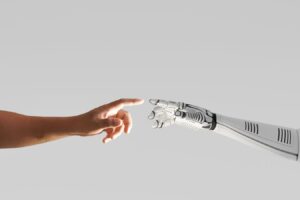AI’s Impact: Transforming 70% of Jobs by 2030

The Future of Work: Adapting to an AI-Driven Labor Market
In recent discussions about the changing landscape of employment, Aneesh Raman, LinkedIn’s Chief Economic Opportunity Officer, shared a striking prediction: by 2030, 70% of the skills needed for most jobs will have evolved significantly. This profound shift signifies more than just the automation of tasks; it suggests a deep transformation in the labor market itself, transitioning toward a skills-based framework centered on human capabilities.
Why the Traditional Labor Market Is Flawed
Historically, the labor market has not served all individuals equally. According to Raman, it has been characterized by a lack of transparency and equity. In previous economic phases, such as the goods economy, exploitation was rampant, necessitating protective laws against child labor and unsafe working conditions.
Even as we moved into a knowledge-driven economy, hiring practices often relied on credentials such as degrees from prestigious institutions or connections to influential individuals. This focus on pedigree rather than actual skills leads to guesswork on employment suitability rather than direct assessments of capability. With the advance of AI, this flawed system is becoming unsustainable, prompting a re-evaluation of how jobs are defined and what skills they require.
The Four Phases of Economic Transformation
Raman describes four phases that outline how AI is reshaping the workplace:
Disruption: This is the initial stage, where the adoption of AI tools begins. Many individuals are already using AI at work.
Job Transformation: Following disruption, we will witness a significant change in skills, with the aforementioned 70% skill shift.
Creation of New Roles: As the labor market evolves, entirely new job titles are emerging. For example, roles like data scientists and social media managers had not existed at the start of the 21st century.
- Innovation Economy: In this final phase, creativity and human innovation will be central, leading to a new economic paradigm.
Analyzing Your Job: The Three-Bucket System
To navigate this transition, Raman recommends a practical approach involving three categories for evaluating your tasks:
Automation Bucket: Tasks that AI can perform or partly automate, such as summarizing documents or generating basic content templates.
Collaborative Bucket: Tasks that require working alongside AI tools, emphasizing AI literacy—i.e., the ability to effectively use AI technologies.
- Human-Centric Bucket: Tasks that capitalize on uniquely human skills, where tasks that rely heavily on creativity, empathy, and sophisticated communication will thrive.
Raman cautions that if a significant portion of your work falls into the automation bucket, it may be essential to upskill to stay relevant.
Prioritizing Soft Skills
As robots and AI increasingly handle technical and analytical tasks, certain skills will become more vital. Raman emphasizes five critical capabilities—dubbed "the five Cs": curiosity, compassion, creativity, courage, and communication. These soft skills are becoming more crucial than technical skills, and Raman cites LinkedIn data showing that relationship-building and strategic thinking are currently in high demand.
AI can emulate human-like communication but lacks genuine compassion and creativity, making these attributes essential in the future workplace.
The Shift from Linear to Squiggly Career Paths
With the rise of AI, traditional career trajectories are evolving. Raman predicts a shift from straight-line career paths to "squiggly line" trajectories where diverse experiences contribute to a unique skill set. He asserts that focusing on your capabilities—rather than job titles—provides greater agency and adaptability in the workforce.
Embracing AI in the Present
It’s essential to recognize that the changes driven by AI are already among us. To prepare, Raman advises individuals to develop AI literacy through engagement with accessible tools like ChatGPT or other AI platforms. Your success won’t rely solely on degrees or job titles but rather on the skills you cultivate.
Shifting your focus from fear to potential is important. Rather than worrying about what tasks AI will take over, embrace what possibilities AI can bring to your work.
Transforming HR into a Strategic Hub
As the workplace shifts towards a human-centered approach, Human Resources (HR) departments are poised to take on more strategic roles. Raman suggests that the evolution of HR roles will parallel the rise of technology executives, with HR becoming integral in aligning business strategies with talent development.
Emerging technologies will enable enhanced people analytics that link skills development to compensation, ultimately reshaping how organizations hire, nurture, and optimize their talent.
A Human-Centered Future of Work
The evolution spurred by AI represents an unprecedented chance to tailor the labor market to reflect human needs and strengths. As we look toward 2030, the anticipated changes in skill requirements are not just challenges; they are opportunities.
By valuing human contributions and fostering environments focused on innovation and adaptability, the labor market can shift from exploiting capabilities to celebrating them, fundamentally altering the work experience for everyone.





